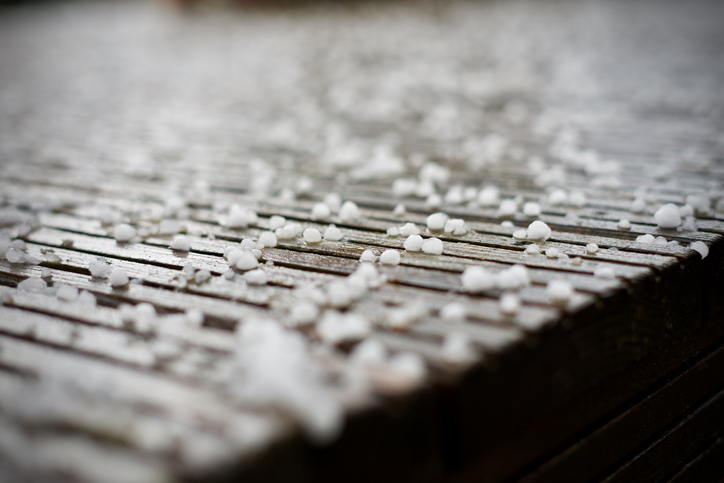Hailstorms are natural weather phenomena that can cause significant damage to properties, especially roofs. The impact of hail damage on roofs is a matter of great concern for homeowners and property owners, and the consequences of these storms require timely inspections and repairs.
Hail is formed when thunderstorms carry raindrops into freezing levels of the atmosphere. These supercooled droplets freeze upon contact with ice nuclei, resulting in hailstones of varying sizes. The size of hailstones can range from small pellets to large chunks, capable of inflicting severe damage. When hailstorms strike, they can wreak havoc on roofs, particularly those made of shingles, tiles, or metal.
One of the most evident impacts of hail damage on roofs is visible dents and cracks. The force of the hailstones can cause shingles to break, tiles to crack, or metal panels to dent. In some cases, the impact may not be immediately noticeable, but over time, the compromised areas may lead to leaks, water infiltration, and further damage to the underlying structure.
Moreover, hail can accelerate the wear and tear of roofing materials. The protective layers, such as granules on asphalt shingles, can be stripped away, leaving the roof vulnerable to ultraviolet rays and weathering. This accelerated aging process can significantly shorten the lifespan of the roof and necessitate premature replacement if not addressed promptly.
Another aspect of hail damage often overlooked is its effect on the integrity of the roof’s structure. Even if the damage is not immediately evident from the ground, the underlying structure may have experienced harm. Continuous exposure to hail and its cumulative effects can weaken the roof’s framework, potentially leading to structural issues and compromising the safety of the occupants.
Furthermore, hail damage can affect the energy efficiency of a property. A damaged roof may have gaps or cracks that allow air infiltration, leading to increased heating and cooling costs. Additionally, leaks resulting from hail damage can lead to moisture accumulation, promoting the growth of mold and mildew, further exacerbating health concerns and property deterioration.
To mitigate the impact of hail damage on roofs, regular inspections and timely repairs are crucial. After a hailstorm, homeowners should conduct a thorough assessment of their roofs or hire a professional roofing contractor to do so. Prompt repairs can prevent minor issues from escalating and protect the overall integrity of the roof.
Additionally, homeowners should consider investing in impact-resistant roofing materials, especially if they live in areas prone to hailstorms. Impact-resistant shingles or metal roofing can provide better protection against hail damage, increasing the longevity of the roof and reducing the frequency of repairs.
Proactive measures will not only ensure the durability of your roof but also protect your overall investment in your property. Royal Crown Roofing and their expertise in dealing with hail storm damage will assist you in our current storm season. Contact them for needed inspections and repairs.




